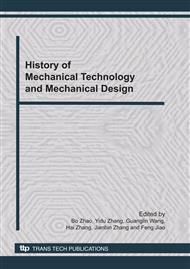p.179
p.183
p.188
p.192
p.196
p.200
p.204
p.209
p.215
Static Analysis on Slewing Bearing with Negative Clearance Based on ANSYS
Abstract:
Based on the FEM and the relative software ANSYS, the analysis of slewing bearings with negative clearance was presented. In this paper, the stress distribution of slewing bearings under condition of different loads has been studied. The clearance has been changed by altering the ball diameter, thus the relationship between the contact stress of the inner/outer raceway and balls and the clearance has been received. Subsequently, compared to the calculation results based on some theoretical models from others, the reliability of the FEM can be verified
Info:
Periodical:
Pages:
196-199
Citation:
Online since:
November 2010
Authors:
Keywords:
Price:
Сopyright:
© 2011 Trans Tech Publications Ltd. All Rights Reserved
Share:
Citation:


